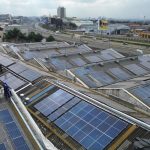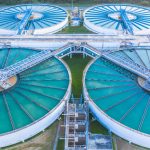With climate change accelerating and fossil fuels becoming increasingly scarce and expensive, more homes and businesses are looking to renewable energy sources like solar power. Traditional energy from coal, oil, and natural gas has powered society for decades, but it comes with huge environmental costs and long-term sustainability challenges. Transitioning more of our energy system to solar and other renewables is crucial both for the planet and for controlling future energy prices. Here’s why making the switch from conventional to solar energy is truly game-changing.
The Benefits of Solar Energy
Solar energy offers several compelling benefits compared to traditional fossil fuel-based energy:
– Renewable and abundant – Solar power taps into the sun’s energy using photovoltaic panels, offering a practically unlimited supply of clean energy. Our solar potential far outweighs our energy needs today. With abundant solar resources in sun-drenched regions like Kenya, widespread solar adoption could fully power these countries.
– Lower energy bills – Solar power systems can produce electricity at or below grid prices today in places like Kenya, insulating homes and businesses from potentially rising energy costs. The fuel (sunlight) is free once systems like Spenomatic solar panels are installed.
– Low maintenance – Once solar systems are installed in countries across Africa, they require little ongoing maintenance over decades of operation. No complex fuel supply chains or smokestack upkeep necessary compared to diesel generators and coal/gas plants.
– No pollution – Generating power from the sun emits zero greenhouse gases or air pollutants. Widespread solar adoption could drastically reduce emissions from electricity production in developing markets.
– Resilient power – Distributed solar energy systems can operate independently if centralized power plants go offline during outages or disasters, an issue plaguing developing nations. Rooftop solar keeps the lights while also making the overall energy grid more resilient.
Overcoming Obstacles to Transition
Shifting more energy infrastructure to solar power won’t happen overnight in Kenya or comparable nations, but governments are upping investments and incentives. Upfront solar installation costs remain prohibitive for many households in Africa, even with rebates, tax credits and favourable solar panel prices from Spenomatic solar and other brands expanding across the continent.
Sporadic income and general financing constraints further hampers solar adoption. And inherent solar intermittency issues due to weather changes can make integrating more renewables complex for weaker regional grids lacking ample storage solutions. But with solar innovation advancing quickly, the obstacles for Kenya and Africa appear more surmountable than just a decade ago. More affordable solar loan options and advancements like Spenomatic solar helping drive down photovoltaic equipment costs could truly be game-changing.
The Leapfrog to Solar Potential for Developing Nations
According to a 2020 renewable energy report from Kenya’s Energy and Petroleum Regulatory Authority (EPRA), solar energy accounts for about 87 percent of the country’s renewable energy mix with over 70,000 Kenyan homes now running on solar. Much of Kenya traditionally relied on dirty diesel generators for electricity access in rural areas while cities and towns connect to the main grid. But the nation gets abundant sunlight year-round, so solar power enables remote villages to leapfrog establishing centralized grid infrastructure at scale. Families can literally jump from no electricity straight to small solar panel systems creating a mini-grid for their essential needs.
With ample solar resources across Africa combined with innovations from Spenomatic Solar and other solar brands to drive down photovoltaic equipment costs, developing nations face irresistible economic potential. Africa has an abundance of pent-up electricity demand too as populations grow and households receive rising incomes. Whether powering a single lightbulb, charging a phone, running a business, or even connecting entire villages, solar energy empowers families and communities to shape their own energy future. No longer fully dependent on centralized fossil-fuel plants.
So despite upfront installation costs, solar systems can pay for themselves in just a few years in sun-drenched regions. And they continue producing cheap, clean energy for decades thereafter while improving local quality of life. Talk about a game changer the planet desperately needs.
Overcoming Grid Integration Obstacles
Shifting electricity supplies toward more solar in Kenya does still face complications like upgrades needed to connect expanding renewable supplies. Solar intermittency can strain weaker grids lacking ample battery storage solutions to smooth solar variability from daytime through nighttime. But technology keeps improving efficiency, battery capacities, and smoothing integration capabilities. California and Germany have shown that modern grids can handle very high renewable penetrations when properly balanced.
Governments worldwide also continue passing new policies and clean energy investment packages to accelerate solar adoption. According to Kenya’s Energy Act 2019, the country aims to hit 100% renewable energy in its electricity mix by 2030. Solar will provide a good portion as organizations like Spenomatic Solar help localize the production of ever-cheaper photovoltaic components. Emerging economies seem positioned to leapfrog the West’s historical reliance on fossil fuels and skip straight to next-gen solutions like solar power plus batteries.
The Future is Solar
The transition toward solar may seem daunting but is urgently needed and increasingly achievable in Kenya among developing markets worldwide. The environmental and consumer benefits of solar energy make it a game-changing electricity source for mitigating climate change threats while also empowering households to chart their own energy future.
The technology exists today thanks to solar innovations from companies like Spenomatic Solar helping to drive down costs. So with the right solutions and policy leadership, a solar-charged economy isn’t some distant pipe dream. For sun-drenched nations like Kenya, it could be closer than we think. The future is solar.






